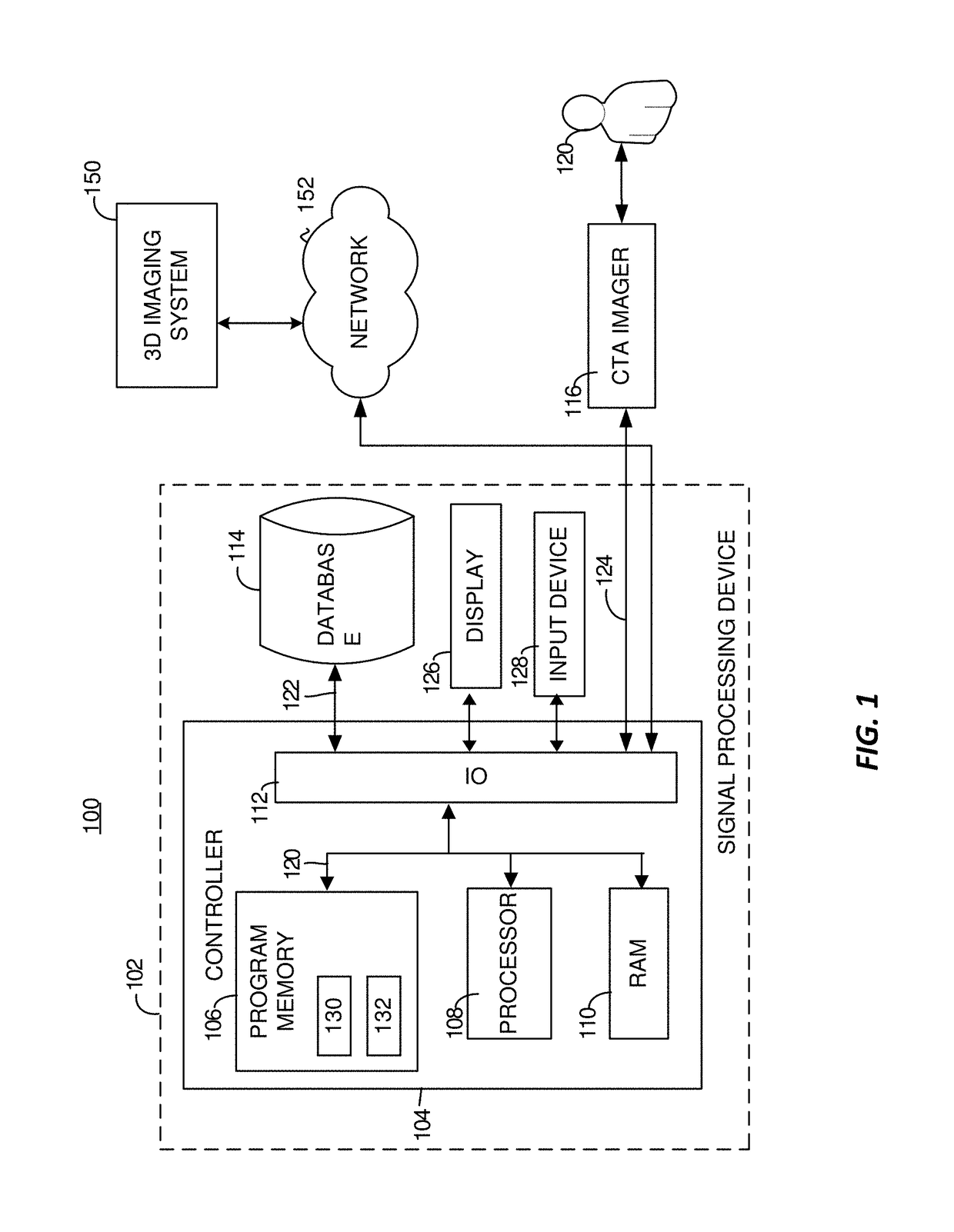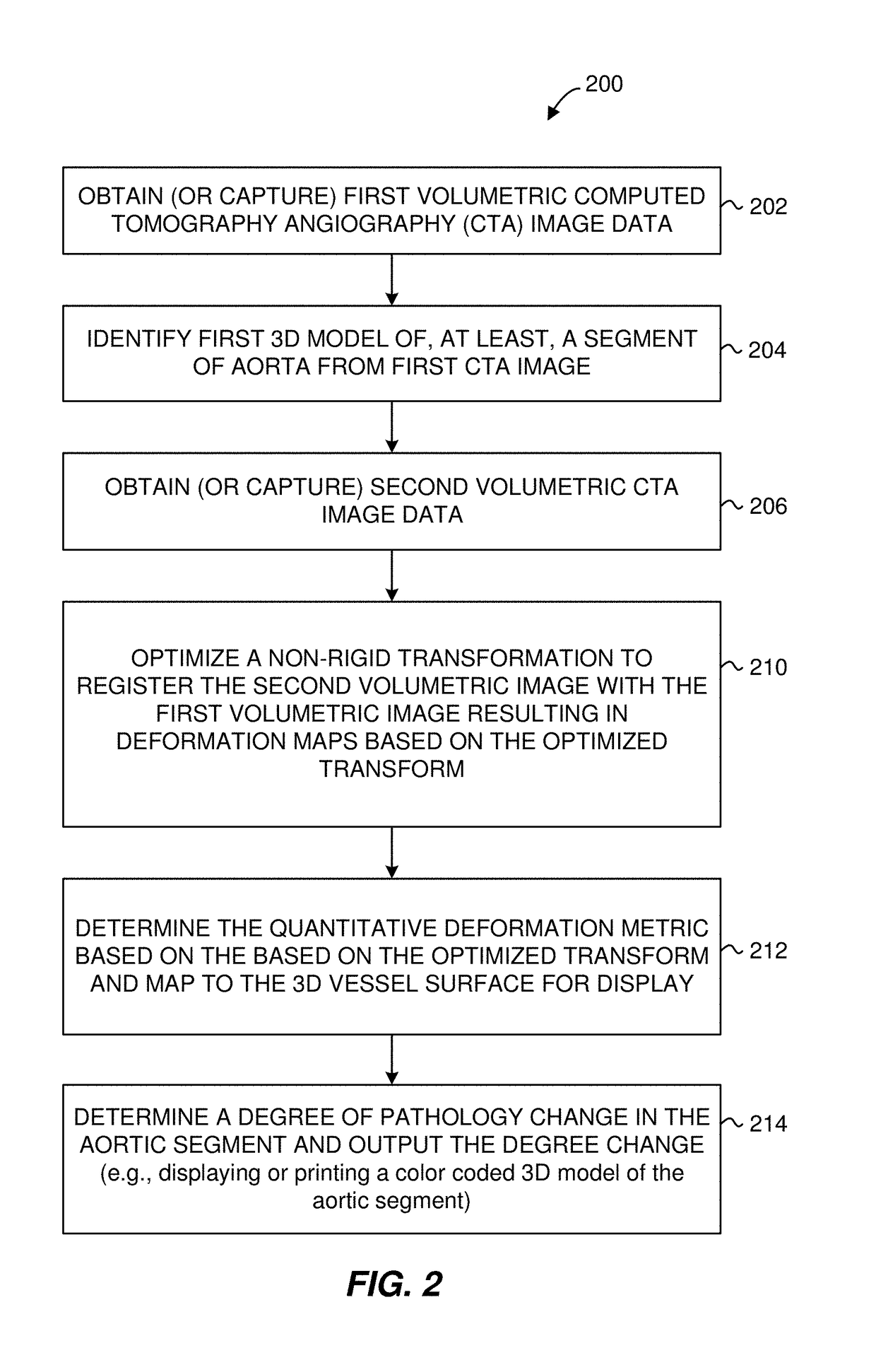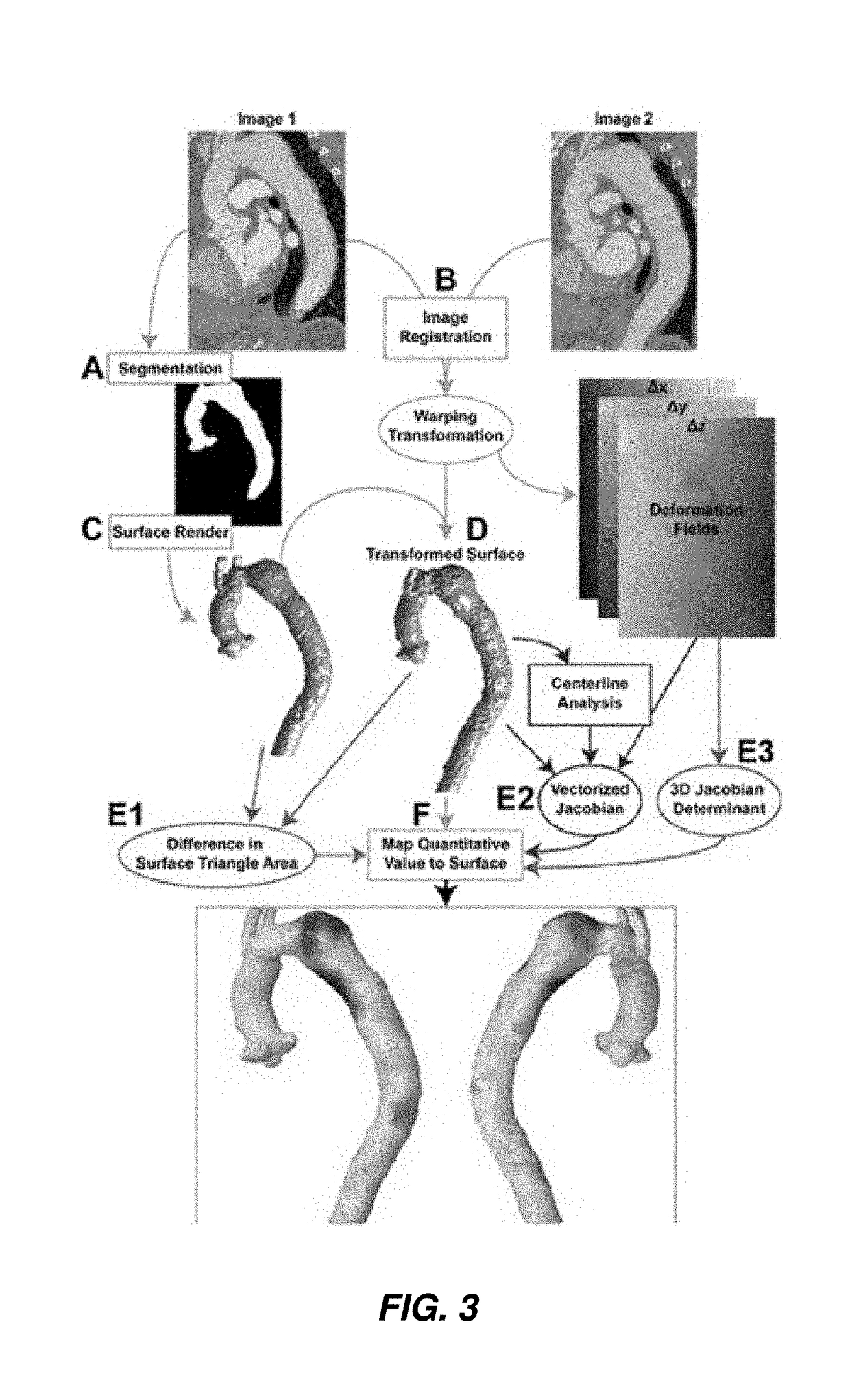Techniques of deformation analysis for quantification of vascular enlargement
a technology of vascular enlargement and deformation analysis, which is applied in the field of imaging analysis of aortic pathologies, can solve the problems of limited ability of standard maximal aortic diameter measurement techniques
- Summary
- Abstract
- Description
- Claims
- Application Information
AI Technical Summary
Benefits of technology
Problems solved by technology
Method used
Image
Examples
Embodiment Construction
[0032]Thoracic aortic aneurysm is a common and lethal disease that requires regular imaging surveillance to determine timing of surgical repair and prevent major complications such as rupture. Current cross-sectional imaging surveillance techniques, largely based on computed tomography angiography (CTA), are focused on measurement of maximal aortic diameter, although this approach is limited to fixed anatomic positions and is prone to significant measurement error.
[0033]The present application provides techniques for assessing change in aortic dimensions using Vascular Deformation Mapping (VDM). In some embodiments, the techniques allow for quantification of three-dimensional changes in the aortic wall geometry through a process that involves non-rigid co-registration of serial volumetric imaging data, such as CTA or magnetic resonance angiography (MRA), and analysis of local aortic deformation derived from the optimized transformation. As we demonstrate, the present techniques may ...
PUM
 Login to View More
Login to View More Abstract
Description
Claims
Application Information
 Login to View More
Login to View More - R&D
- Intellectual Property
- Life Sciences
- Materials
- Tech Scout
- Unparalleled Data Quality
- Higher Quality Content
- 60% Fewer Hallucinations
Browse by: Latest US Patents, China's latest patents, Technical Efficacy Thesaurus, Application Domain, Technology Topic, Popular Technical Reports.
© 2025 PatSnap. All rights reserved.Legal|Privacy policy|Modern Slavery Act Transparency Statement|Sitemap|About US| Contact US: help@patsnap.com



